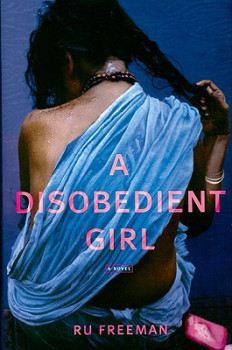
Lahiri’s strong suit is place. Descriptions of Kolkata trickle into my mind and I can see those dusty corners of India where the situations written about in the book could’ve taken place, and the small “lowland” of my own that I came to cherish and be so complexed by.
The house I was staying at in Sarnath was almost eerily like the area of Tollygunge—but instead of stopping outside a mosque and walking the rest of the way, we stopped outside a small restaurant. Every morning we walked through a small alley that cut through backyards, chicken pecking at our feet, a small girl with ribboned pigtails on her way to school. Past the alley, the world suddenly opened again, a small dirt road careening to the right around a massive field that seemed like it had always been a puddle.
The house was directly across from the field, and so we would walk through the puddle on an exposed bit of land to reach it. At a certain point in the path, the smell was intense, but nothing could be seen under the grassy green moss. It was only after someone asked that a friend pointed out the carcass of an animal, mere yards away from where we had walked each day.
The restaurant on the corner gave me food poisoning from a “vegetable pizza” and when I started feeling better but not quite good enough to venture out of of the house, I started to climb up to the roof, slipping into outside slippers on the second story marble balcony, climbing up the whitewashed steps to the empty roof. From there, the view as unlike anything I’ve ever seen, and will probably ever see, and I wonder why I never took a picture of it until I remember that when I considered it then, I realized that I could not capture everything that I was seeing at once. To the back of the house was an enclave of other houses, people hanging saris and blankets to dry on their roofs or, once, children flying kites that filled the winter sky. At the other edge, looking down into the yard where the dog was tied up and the servant was invariably doing some tinkering in a small tin-roofed garage, you could lift your eyes and make out the crowd circumambulating the Dhamekh stupa in the distance.
More impressive was the dirty puddle. I don’t know how much time I spent, peering over, hoping the servant wouldn’t catch me staring or the eight-year-old daughter wouldn’t come bounding up the stairs, lemon tea in hand, to find me, but it was enough to lose oneself. In the puddle, several hundreds of feet away from the grassy path and the animal carcass, women and men could be seen doing laundry, and it was this way all over the India I traveled to (which admittedly wasn’t a lot)—the living in close proximity to the dead, as if there were only a thread connecting the two, not opposite sides of a coin but merely two seasons, blending into one another, marked arbitrarily by dates on a calendar and festivals ushering in new beginnings.
Lahiri is able to bring places like these to life on the page. Unfortunately, not the same could be said for the characters of this novel. I think this has something to do with the fact that Lahiri seems to grow weary of characters that don’t seem to evolve, characters for whom single emotions rule their way of thinking and behaving in the world. The Lowland is definitely an improvement over The Namesake, although Western readers might be put off by the stronger ties to India in the novel, accomplished with the tidbits of history of the Naxalites and the insurgency of communism in India.
It was a great read, until the latter quarter of the book. This book spans almost two generations, and for me, it was simply too much. Towards the end of the book, I was craving a release and Lahiri didn’t follow up—her characters had no absolution but unlike the rest of her work, I didn’t feel as if that was a plus. In a short story, one can drop a character into the middle of nowhere and still allow the reader to feel as if the story continues on, off the page. Lahiri seems to be struggling to hold onto this while wrapping up the loose ends in the novel.
I love the simplicity of the cover art for the American first edition, and typesetting/handwriting is certainly in fashion these days, but there’s something to be said about the more illustrative Indian cover art. Then again, say the word “Naxalite” around an average American and they would probably ask if it was a new line of non-stick baking products.
I really hope the next book of Lahiri’s is a collection of short stories.
Share this:




